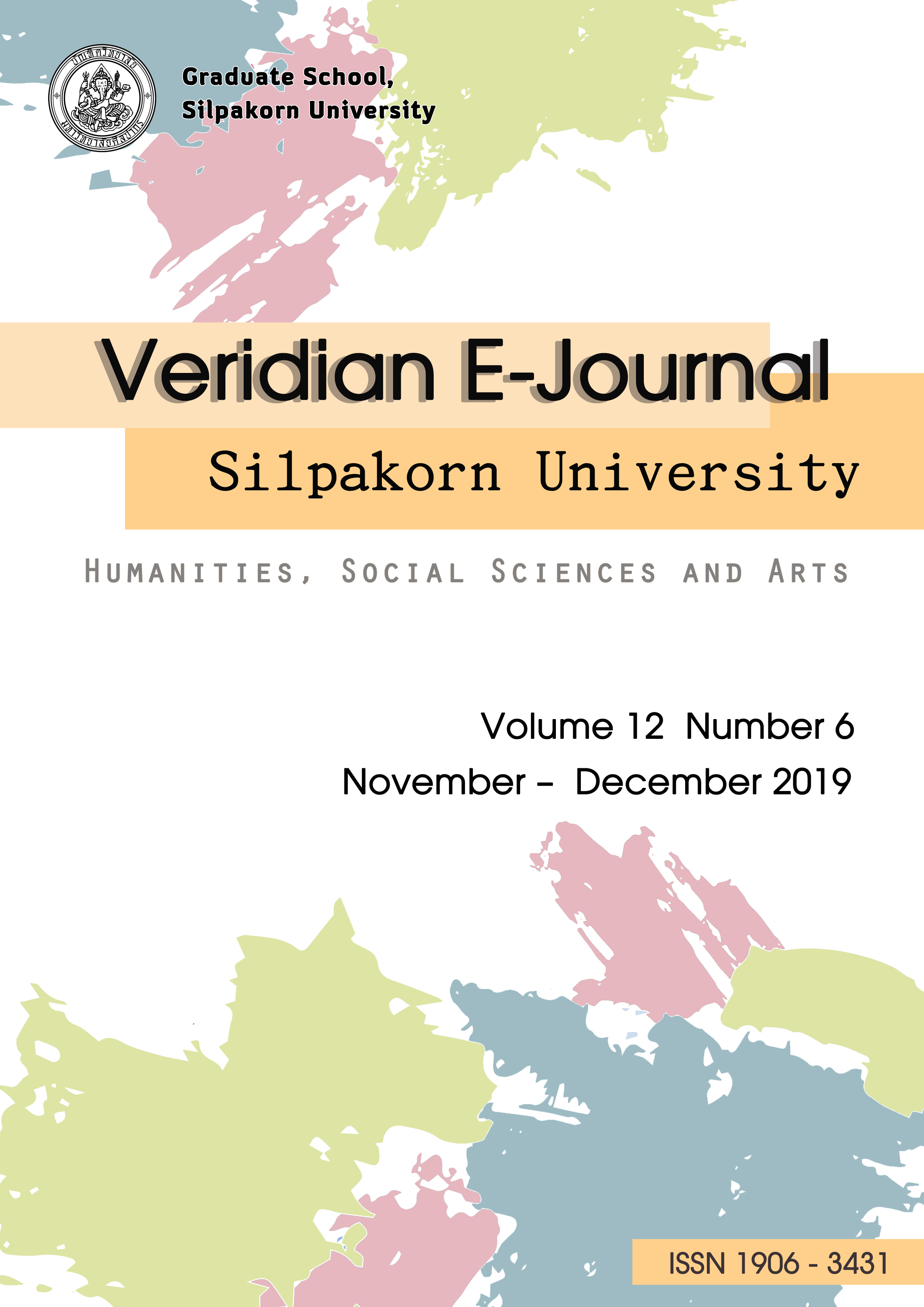“ไทดำ” ชาติพันธุ์ร่วมสมัย (“Tai Dam” Contemporary Ethnic)
Main Article Content
Abstract
ไทดำเป็นกลุ่มชนกลุ่มน้อยที่อาศัยอยู่ในประเทศไทย ที่เคยตั้งถิ่นฐานที่เวียดนามโดยอาศัยอยู่ตามแม่น้ำแดงและแม่น้ำดำในเวียดนามเหนือ และได้อพยพย้ายถิ่นฐานมาประเทศไทยเมื่อปี พ.ศ. 2423 ซึ่งเป็น คนไทยที่รู้จักกันในนาม “ไทดำ” หรือ “ลาวโซ่ง” ในปัจจุบันมีกลุ่มชาติพันธุ์ไทดำ จำนวนกว่า 90 ล้านคนที่อาศัยอยู่ในดินแดนของชาติอื่น ซึ่งจำแนกได้ถึง 80 กลุ่ม ชาติพันธุ์ไทดำพบได้ใน 4 ประเทศ ได้แก่ จีน ลาว ไทย และเวียดนามตะวันออกเฉียงเหนือ พวกเขาเชื่อว่าบรรพบุรุษของพวกเขาเกิดขึ้นในภูมิภาคสิบสองจุไทซึ่งเป็นบ้านเกิดของชาวไทดำในเอเชียตะวันออกเฉียงใต้และอพยพไปยังประเทศอื่นๆ เนื่องจากเกิดความขัดแย้ง หรือย้ายถิ่นฐานไปยังดินแดนที่อุดมสมบูรณ์มากขึ้น ท่ามกลางการอนุรักษ์แบบดั้งเดิมของชาวไทดำปัจจุบัน กลุ่มชาติพันธุ์ไทดำที่อาศัยอยู่ในประเทศไทยต้องการให้เรียกว่าพวกเขาว่า “ไทดำ” มากกว่า “ลาวโซ่ง” วิถีชีวิตภาษาถิ่นวัฒนธรรมและประเพณีของพวกเขาได้รับอิทธิพลบางส่วนจากศาสนาพุทธ แต่ประเพณีและความเชื่อดั้งเดิมทั้งหมดยังคงได้รับการอนุรักษ์ไว้ ในบางประเทศมีข้อจำกัดในการแสดงออกของอัตลักษณ์ทางชาติพันธุ์ของไทดำในพื้นที่สาธารณะ ทำให้ชาวไทดำจำเป็นต้องปรับเปลี่ยนหรือเปลี่ยนสัญลักษณ์ทางวัฒนธรรมของชาติพันธุ์ตนเอง โดยที่ชาวไทดำได้ยอมรับวัฒนธรรมของชาวไทยที่เปลี่ยนแปลงไปตามยุคสมัย เคารพสิทธิ ประเพณี วัฒนธรรม ยอมรับและปฏิบัติตามโดยไม่สูญเสียความเป็นตัวตน เช่นเดียวกับที่สังคมชาวไทยและกลุ่มชาติพันธุ์ไทดำต่างยอมรับในความแตกต่างซึ่งกันและกัน ทั้งชาวไทยและชาวไทดำจึงสามารถดำรงชีวิตร่วมกันได้อย่างมีความสุข ทำให้กลุ่มชาติพันธุ์ไทดำยังคงไว้ซึ่งความเป็นตัวตนในสังคมของความเปลี่ยนแปลงตั้งแต่อดีตจนถึงปัจจุบัน
The Tai Dam are a minority group that reside within Thailand. These settlers were once Vietnamese who lived along the Red and Black River of northern Vietnam. In the 1880’s a group Vietnamese fled to Thailand. They are Thais known as “Tai Dam” or “Lao Song”. At present, some 90 million ethnic Tai Dam people live across the region, and can be divided into 80 groups. The ethnic Tai Dam group is found in four countries: China, Laos, Thailand, and northeastern Vietnam. They believe that their ancestors originated in Sipsongchuthai Region, the homeland of the Tai Dam peoples in Southeast Asia and migrated to other countries due to conflicts or in search of better and more fertile land on which to settle. Amidst the traditional conservation of the Tai Dam people, the Tai Dam in Thailand now want to be called Tai Dam rather than Lao Song. Their way of life, dialect, culture and traditions are partially influenced by Buddhism, but all the original traditions and beliefs have been preserved. Therefore, State restrictions on the expression of ethnic identity in public spaces has made it necessary to select, receive, adapt, or change ethnic cultural symbols. Tai Dam are able to adapt their life style during Thai’ s culture in every era by respecting the human rights, traditions, and culture without losing their ethnical identity. While Thai society and Tai Dam ethnic groups can accept each other's differences. Both Thai and Tai Dam people can live happily together. Therefore, Tai Dam still maintains their identity during the society change from past to present.

